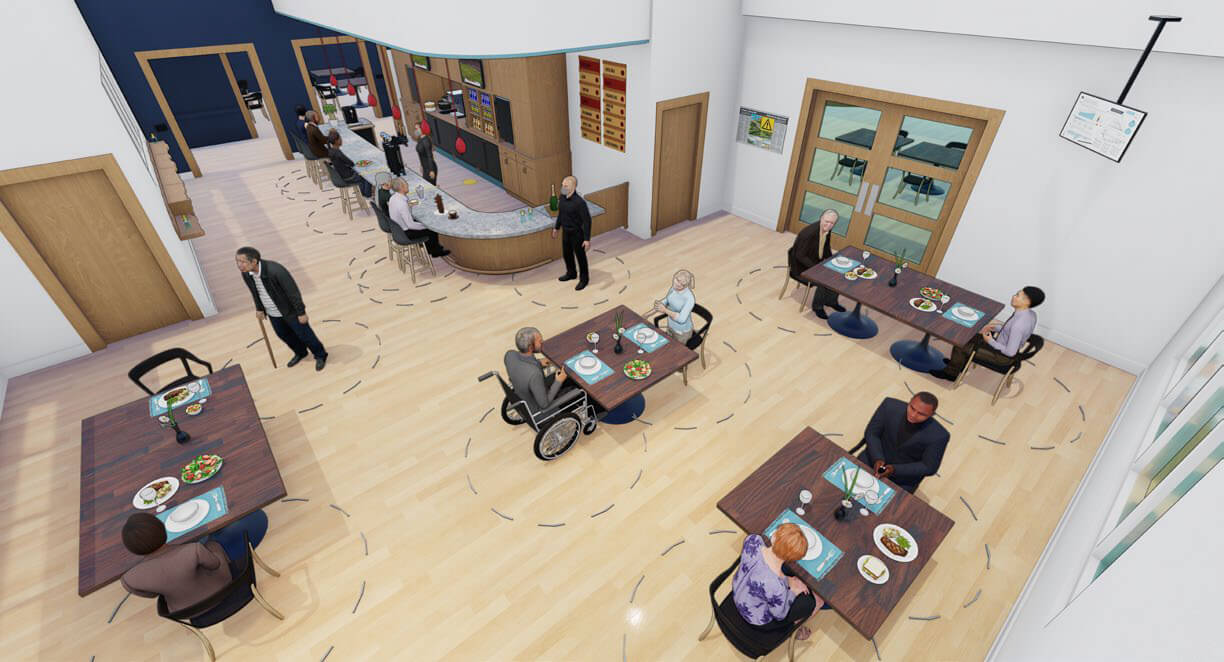Nursing homes and other senior living facilities are the perfect settings for coronavirus to rip through; immunocompromised elderly residents typically live in tight conditions, receive sometimes substandard care, and likely have frequent contact with visitors. New York, California, and other states failed to get a handle on COVID-19 cases in those environments, with disastrous results.
With much of America attempting to reopen (and then backtracking as COVID cases have risen), the American Institute of Architects (AIA) has followed up its series of guides and design resources for retail and office spaces with a similar report for senior living facilities. In Strategies for safer Senior Living Communities, the AIA has put together a packet of design strategies for each section of such facilities while acknowledging the difficulty in working in such close proximity without proper personal protective equipment (PPE).
Some of those suggestions include:
- Enlarging open assembly areas such as dining halls and making sure residents maintain six feet of space
- Introducing contactless doors and drinking fountains while bringing in handwashing stations
- Restricting outside visitation but allowing more pets on the premise to make up for the increased isolation
- Increasing one-way circulation in high-traffic areas
- Because physical fitness remains a priority for the elderly but oftentimes requires residents to be in close proximity, the AIA has recommended implementing a reservation system in these areas and enforcing occupancy limits. HVAC upgrades and the potential for outdoor classes, if possible, were also raised
- Other suggestions include small but often overlooked ideas: Keeping a guestbook to help contact tracers in case an infection does break out, spacing out shared bathrooms to help keep infectious aerosols to a minimum, and tailoring prevention plans to PPE shortages (or access) are all necessary
One major difference between the restaurant and retail design strategies and the nursing home guidelines provided is the recognition of the toll that prolonged isolation would have on residents’ mental health, and the AIA took pains to allow socialization while minimizing the chances of infection. Of course, this report is just supplementary material that firms should build from based on context.
Participants who helped put the report together include:
David Banta, AIA | Wiencek Associates (Graphics)
David Banta, AIA | Wiencek Associates
Alexis Denton, AIA | Perkins Eastman
Mark Fretz, DDS, Assoc. AIA | University of Oregon
Rose Grant, AIA | Rose Grant Architectural Services
Juliana Grant | Public Health Nerds
Sarah Gregory, AIA | Cooper Carry
Christopher Laverne, AIA | HKIT
Eric McRoberts, AIA | RLPS
